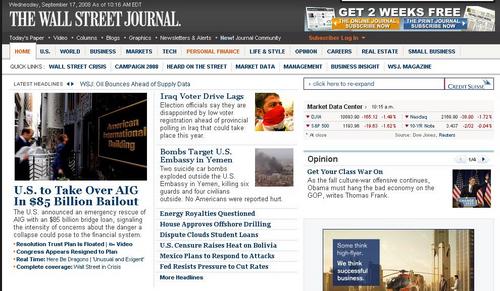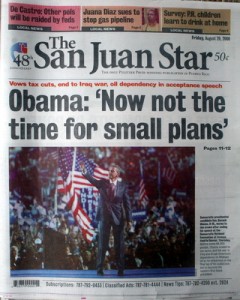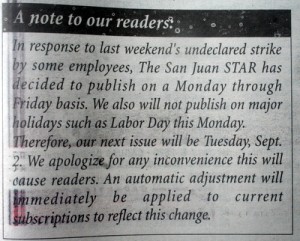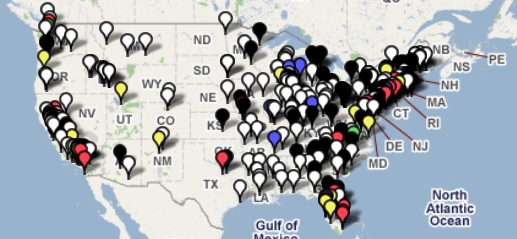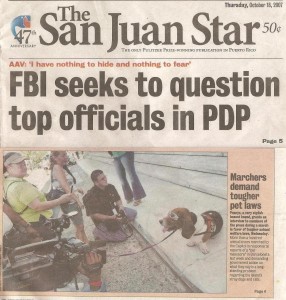Twitter and live blogging are beginning to raise interesting frictions between first amendment freedoms and people’s right to privacy. Rocky Mountain News reporter Berny Morson sparked outrage last week by Twittering the funeral of three-year-old Marten Kudlis, who died when a pickup truck slammed into an ice cream shop in Aurora, Colo. This week, there’s a lively debate on Mark Glaser’s Media Shift page over New York University journalism student Alana Taylor’s negative blog comments about one of her professors. After Taylor’s comments appeared, the professor instituted a ban on blogging about what went on in her classroom, although she later modified that to ban only live blogging.
Five years ago, these issues didn’t exist. Ordinary people couldn’t post to the Web very easily, so publishing was limited to an elite few. Today, anyone with a computer can be a publisher, which means that events and conversations that would have once been presumed private may now be considered on the record if one party chooses to make them public. Bill Clinton and Barack Obama have both recently found this out the hard way.
In the case of tweeting a funeral, the issue is more one of bad taste than of privacy. The NYU incident is more complex because it involves a journalism professor trying to limit the speech of her own students. Is an NYU class considered restricted because the school is private? Or is a journalism class inherently open because it would be hypocritical to close it? What rules apply to other classes? How about conversations between two strangers on a street corner? Or bad behavior in public by a person who isn’t a public figure? These interactions have been off-the-record in the past because it wasn’t worth anyone’s time and effort to report them. That’s not the case any more, and that opens up a whole can of worms that we’ll be unraveling for years.
Miscellany
New York Times Co. becomes the second media company in the past week to report that year-over-year sales declines in August weren’t as steep as in previous months. The company’s advertising revenue slipped 16% compared to August, 2007. That’s a bit better than the 18% declines reported in June and July. Online ad revenue was also up, reversing a recent trend. Analysts are cautioning against too much optimism, though. They say that one month doesn’t make a trend and the current chaos in the financial industry is likely to hit newspapers hard. That’s because so many newspapers are so highly leveraged. Outsell analyst Ken Doctor points out that the only hope for survival at some of these companies is to find new sources of cash. With financial institutions reining in their lending activities, that reality is going to hit highly leveraged companies like Tribune Co. hard, he notes.
Will the Newark Star-Ledger be the next major newspaper to go under? That’s what the publisher is threatening. George Arwady sent a terse memo to employees early this week saying that if the company can’t eliminate 200 positions and gain several union concessions, it will close on Jan. 5, 2009. Editor & Publisher has the memo. The editor of the Star-Ledger isn’t saying much, but the newspaper is reportedly far short of its goal of eliminating 100 newsroom positions.
Google considers itself a partner to publishers, but some who ponder this relationship are reminded of Woody Allen’s quote: “The lion shall lie down with the lamb, but the lamb won’t get much sleep.” The New York Times has a story about one such partner, Dan Savage, who built a nice business converting Google AdWords to paid links on his directory site. His business collapsed when Google suddenly decided to increase his prices fifteenfold. The Times presses Google for an explanation of its policy change and comes up frustrated.
Alan Mutter sings the praises of bankruptcy protection as one cure for the ills afflicting distressed newspaper owners. Bankruptcy has a poisonous connotation, but it’s actually an opportunity for businesses to renegotiate debt, discard union contracts and get the business back on its feet. Sure, a company’s credit rating is destroyed in a bankruptcy action, but that’s happening already as newspaper owners fail to meet debt obligations. Mutter focuses in particular on Philadelphia Media Holdings, which is teetering on the brink of insolvency, having already missed a key debt payment. Mutter’s opinion isn’t universally shared. David Cay Johnston tells Romenesko that legal protection shouldn’t be a refuge for nepotism and lousy management. Both are the case with Philadelphia Holdings, he writes.
News Corp. will boost subscription revenue from The Wall Street Journal, its Web site and Dow Jones by more than $300 million annually over the next two to three years, according to Bloomberg. News Corp. CEO Rupert Murdoch is quoted as saying the subscription services are “grossly undersold.” How he’s going to improve them that dramatically at a time of declining circulation is anyone’s guess.
Layoff Log
- The Kansas City Star will lay off about 30 employees on top of the 24 who accepted the newspaper’s early-buyout offer. It will also look into outsourcing its financial functions to Indian firm Infosys. The cuts are in addition to the 120 layoffs announced three months ago.
- The Miami Herald is also laying off more employees on top of cuts previously announced. Eighty full- and part-time employees will be asked to leave and 40 vacant positions will be eliminated. The Herald cut 250 positions just three months ago.
